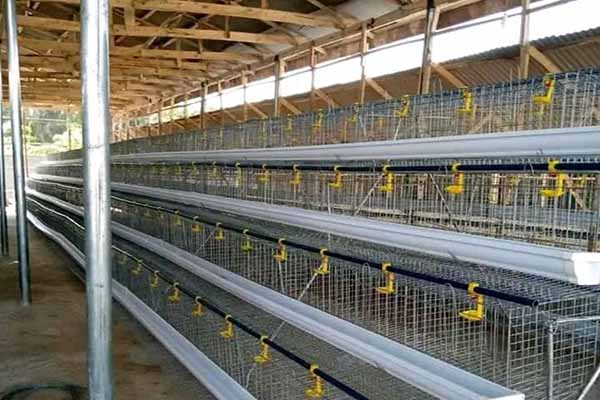How to Reduce Feed Waste in Kenya Chicken Farms: Practical Tips for Efficiency
Time : 2025-04-28
Are you a chicken farmer in Kenya looking to improve your farm’s efficiency and reduce feed waste? You’re not alone. Feed waste is a common issue in the poultry industry, but with the right strategies, you can minimize it and keep your farm running smoothly. In this article, we’ll delve into practical tips and techniques to help you reduce feed waste in your Kenya chicken farm.
Understanding Feed Waste
First things first, let’s define what we mean by feed waste. It’s essentially the unused portion of feed that gets wasted for various reasons, such as over-feeding, spillage, or spoilage. By understanding the root causes of feed waste, you can implement targeted solutions.
1. Evaluate Your Feed Consumption
The first step in reducing feed waste is to assess your current feed consumption patterns. Keep a close eye on how much feed your chickens are consuming and compare it to the amount you’re providing. This will help you identify any discrepancies and adjust accordingly.
2. Optimize Feeding Practices
Here are some feeding practices that can help reduce feed waste:
– Automated Feeding Systems: Consider investing in automated feeding systems that dispense feed at precise intervals. This helps prevent over-feeding and ensures that chickens only eat what they need.
– Feed Amount Adjustment: Adjust the amount of feed you give your chickens based on their age, weight, and stage of production. For example, chicks need less feed than adult birds.
– Free-Range vs. Conventional Feeding: If possible, provide your chickens with access to outdoor areas where they can forage for their own food. This not only reduces feed waste but also improves their health and welfare.
3. Store Feed Properly
Proper feed storage is crucial in preventing spoilage and waste. Here’s how to do it:
– Dry, Cool, and Ventilated Storage: Store feed in dry, cool, and well-ventilated areas to prevent mold and pests.
– Use Airtight Containers: Use airtight containers or feed bins to keep feed fresh and protected from moisture and pests.
– Rotate Feed: Regularly rotate your feed stock to ensure that older feed is used first, reducing the risk of spoilage.
4. Monitor Feed Quality
Regularly inspect your feed for quality. Signs of spoilage or poor quality include a musty smell, clumping, or an unusual color. By keeping an eye on feed quality, you can prevent feed from going to waste.
5. Implement a Waste Management Plan
Develop a waste management plan that outlines how you will handle and dispose of any wasted feed. This might include composting, donating to local farms, or using it as bedding.
6. Train Your Staff
Your farm’s success depends on the knowledge and skills of your staff. Ensure that they are trained on proper feeding practices, feed storage, and waste management. A well-informed team can significantly reduce feed waste.
7. Utilize Feed Additives
Certain feed additives can help reduce feed waste by improving feed conversion rates and reducing the amount of feed needed per chicken. Consult with a poultry nutritionist to determine which additives are right for your farm.
8. Regularly Clean Feeders
Regularly cleaning feeders can prevent feed from getting moldy or contaminated, which can lead to waste. A clean environment also encourages your chickens to eat more efficiently.
9. Monitor Water Availability
Chickens need access to clean, fresh water at all times. Dehydration can lead to reduced feed intake, which in turn can cause feed waste. Ensure that your chickens have constant access to water.
10. Keep an Eye on Health Issues
Illness or stress can lead to reduced feed intake and increased feed waste. Regularly monitor the health of your chickens and address any issues promptly.
Conclusion
Reducing feed waste in your Kenya chicken farm is not only good for your bottom line but also for the environment. By implementing these practical tips and staying vigilant, you can minimize feed waste and keep your farm running efficiently.
Remember, every small change can make a big difference. Start with these strategies and continually evaluate and adjust your practices to find what works best for your farm.












